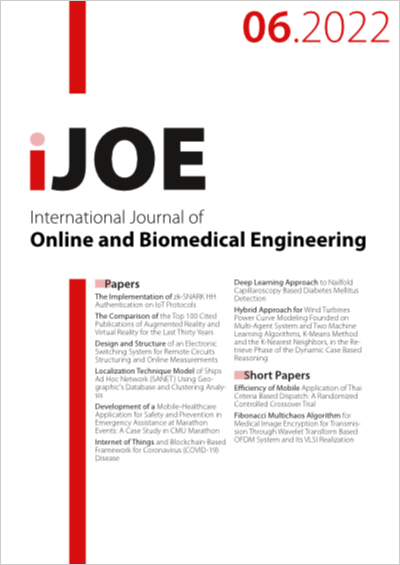Deep Learning Approach to Nailfold Capillaroscopy Based Diabetes Mellitus Detection
DOI:
https://doi.org/10.3991/ijoe.v18i06.27385Keywords:
Nailfold Capillaroscopy, Object Detection, Diabetes Mellitus, Capillary features, YOLO architectureAbstract
Diabetes mellitus is a commonly occurring chronic metabolic disorder which has affected almost 400 million people around the world. It can lead to vascular structure alterations and various renal, cardiovascular, and neurologicalcomplications claiming several lives. Since diabetes mellitus results is vascular structure changes, NailfoldCapillaroscopy(NFC) based approach can be employed for the detection of diabetes. NFC is an inexpensive, non-invasive method which involves acquisition of images of capillaries in the nail bed region using a USB digital microscope. Qualitative parameters of the capillaries such as tortuosity, hemorrhages, angiogenesis, elongated capillariesand quantitative parameters like length, width and mean capillary density are considered for diabetes detection. About 600 capillary images of healthy and diabetic subjects were collected and further data augmentation was performed to increase this to 1018 images dataset. This paper focuses on using NFC to obtain capillary images and employdeep learning-based object detection algorithm to localize these capillary loops on the nailbed and differentiate them into five classes namely, normal, wide, elongated, tortuosity and hemorrhages. This classification is of prominent significance to medical practitioners as this helps in gauging the severity and progressionof the disorder.
Downloads
Published
How to Cite
Issue
Section
License
Copyright (c) 2022 Suma K V, Sethu Selvi, Pranav Nanda, Manisha Shetty, Vikas M, Kushagra Awasthi

This work is licensed under a Creative Commons Attribution 4.0 International License.



